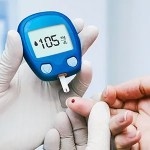By dR JUVERIYA MOMIN, Registered Pharmacist
Varicose vein medication, oral medication for varicose veins, medication for varicose veins pain
Varicose veins are big, bulging veins that form on the skin and can be blue or purple. These occur when the valves inside your veins weaken and are unable to prevent blood from flowing back, rather than transferring all of the blood back to your heart. It affects a wide range of people but is more common in women, the elderly, and while pregnant. Varicose veins can cause pain, swelling, heaviness, itching, skin soreness, and other symptoms, in addition to cosmetic difficulties. Leg pain, cramps, and heaviness. Swollen, bulging, and/or twisted veins that appear to push against the skin. Darkened bluish, reddish, or purple veins in a web-like or rope-like pattern. Itching near veins.
Throbbing or scorching pain worsens when sitting or standing for long periods of time. The veins in your legs can push blood up towards the heart thanks to the muscles in your legs. However, this is only feasible when you are moving around. As a result, physical activity is critical for relieving varicose vein symptoms, as sitting or standing for extended periods of time might aggravate your varicose veins.
Exercise for varicose vein:
- Daily walking provides numerous health benefits:
Walking, especially if you have varicose veins, improves blood circulation while also providing a modest workout. Because blood flow is the primary cause of varicose vein formation, regular walks can help to minimize your chance of acquiring them in the first place along with varicose vein medications.
- Running:
Running has many of the same benefits as walking, including improved cardiovascular health. Physical activities, such as jogging, cause your leg muscles to contract and expand. You must strike a balance between leg strength and circulation while avoiding putting undue strain on your leg’s blood vessels.
- Leg lifting:
Leg lifts can help you strengthen your legs even if you don’t have access to club or home exercise equipment. This entails sitting (on the floor or on a chair) or lying down with your back to the floor.
4.Cycling
If you have a bicycle or pedaling machine at home, you can use it to strengthen your calves. Cycling provides all of the benefits of running, including improved blood circulation and cardiovascular health.
5. Ankle exercises
Ankle exercises Many people develop varicose veins at or near their ankles. There are various ankle workouts you can do, beginning with calf lifts. For standing calf raises, stand in front of a wall or a sturdy object to rest your palms on.
Oral medication for varicose veins:
Analgesics:
Over-the-counter NSAIDs (nonsteroidal anti-inflammatory medicines) like aspirin or ibuprofen, as well as pain relievers like paracetamol, can be used to treat varicose vein pain and discomfort. This is one of the good medications for varicose vein pain.
Phlebotonics:
Some studies have found that over-the-counter dietary supplements, such as horse chestnut extract, can help relieve varicose vein symptoms.
Sclerosing agents:
Instead of physically eliminating a varicose vein, a doctor may inject a sclerosing agent (or sclerosant) into the affected vein.
A varicose vein can be entirely closed or removed using minimally invasive medical techniques. Nowadays, these therapy modalities are minimally invasive and can be performed as outpatient procedures using local anesthesia, allowing for a speedy recovery.
FAQ
- How can you alleviate varicose pain?
Exercise, lifting your legs when sitting or lying down, and wearing compression stockings can all help relieve the pain of varicose veins.
- What are the treatments for varicose veins?
However, there is no cure for varicose veins.












